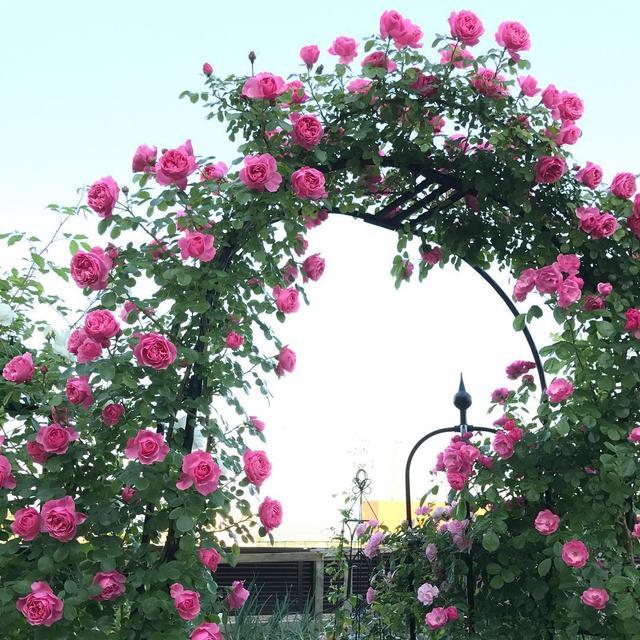Rose cuttage takes only 5 steps to let you who love roses survive 100% cutting.

Roses are flowers that every girl will like, and many people will want to reproduce on their own when breeding, but the sowing cycle is too long, so most flower friends choose cutting propagation!
The steps of cutting roses are actually very simple, as long as you choose the time and cutting branches and buds, you will be able to propagate successfully after a little treatment.
I. the steps of cutting roses
1. Cutting time
Rose cutting time is quite special, spring, summer can be into the cutting propagation, the most important is in the end of winter is also able to cuttage. The cutting time is from February to March in spring, from July to August in summer, and from December to January in late winter and early spring in winter.
2. Soil disinfection
Roses propagated by cuttings like loose and permeable soil, it is best to apply some humus to it, which will increase the survival rate of cutting roses. Use peat, sandy soil plus part of perlite and carbonized rice husk, it is best to mix well in the proportion of 3 to 2, and then spray some diluted potassium permanganate and methyl topiramate to disinfect it.
3. Select branches and buds
The selection of cutting branches and buds is the most important step in the step diagram of cutting roses. Spring cuttings choose 2-year-old strong branches and buds, summer choose this year's young shoots, and winter will choose this year's strong branches and buds. And it is best to cut the lower end of the branch bud into a duck-billed wedge, and then remove all the leaves above the branch bud.
4. Treatment of branches and buds
Rose branches and buds have to be treated before cutting, you can soak the cutting buds in the rooting water after being diluted for 12 hours. If you feel that the time is too long, you can also dip the lower end of the flower branches into rooting element, indolebutyric acid, and naphthalene acetic acid and ABT. After dipping it, the rooting speed will be much faster.
5. Cutting method
Insert the treated rose stalk into a potato, then bury the potato in the previously prepared soil, then cover the soil, compact the soil with your hands, add the right amount of water, and put it in a cool environment. You can wait for the flower branches to sprout and take root.
Second, matters needing attention in cutting roses
When cutting roses, it is the most basic to choose healthy branches and buds, but if you still want to increase the survival rate of cuttings, it is best to choose the middle section of the branches and buds, preferably counting from the top of the branches and buds. The branches and buds of the fourth to ninth sections are easy to survive and take root.
Third, the conservation of cutting roses
1. Watering
After the roses have been cut, they need to be well preserved. When the roses are watered for the first time, they will be soaked through the soil, and then the amount of water will be reduced, basically slightly moist the soil, and then put into a cool environment until the cuttings take root. Change the small pot into a larger flowerpot, and then breed it according to the normal amount of water and increase the light in the right amount.
2. Temperature / humidity
If you want rose cuttings to take root faster, it is best to control the temperature between 18 ℃ and 28 ℃, watering as little as possible in the first ten days, using more spray to spray the plant and its surrounding environment, and the humidity should be about 95%. Until 10-15 days later, the amount of water that the cuttings can slowly increase, and then gradually accept the sunlight.
3. Fertilization
General flowers do not need to be fertilized when they reproduce, but a little fertilizer needs to be applied to maintain the roses during cutting. Especially when changing pots, it is best to mix a little bit of slow-release fertilizer with high phosphorus and potassium in the soil of the flowerpot, but when fertilizing, you must pay attention to separate the fertilizer from the root of the plant with a layer of soil to avoid fertilizer damage.
Through the above introduction, I believe you have understood the steps of cutting roses. As long as you strictly follow the above steps and pay attention to the maintenance after cutting, you can also have your own rose pot.
Click to read the original text and enter the succulent mall immediately
- Prev

The vines choose this beautiful and fragrant four seasons to blossom a large number of flowers on the balcony to become a garden.
Guide green potted plants is a necessary embellishment of home life, raising some flowers and plants at home, many benefits, not only can beautify the room, but also happy mood. Huasheng potted Diary No. 1264 will introduce you to Hua, a kind of vine that is worth cultivating.
- Next

When September comes, are you still worrying about the lack of delicious meat? Everything you want is here.
Good evening, everyone ~ chores have come to give you Amway again. In a twinkling of an eye, it is a crisp September in autumn, and the good time for succulent plants is coming soon! Tonight, chores will bring you ten kinds of high-quality meat from Yunnan! I'm sure I can.
Related
- Wuhan Hospital Iron Tree Blooming Result Was Instantly Frightened by the Gardener Master
- Which variety of camellia is the most fragrant and best? Which one do you like best?
- What is the small blue coat, the breeding methods and matters needing attention of the succulent plant
- Dormancy time and maintenance management of succulent plants during dormancy
- Minas succulent how to raise, Minas succulent plant pictures
- What are the varieties of winter succulent plants
- How to raise succulent plants in twelve rolls? let's take a look at some experience of breeding twelve rolls.
- Attention should be paid to water control for succulent plants during dormant period (winter and summer)
- Watering experience of twelve rolls of succulent plants
- Techniques for fertilizing succulent plants. An article will let you know how to fertilize succulent plants.

